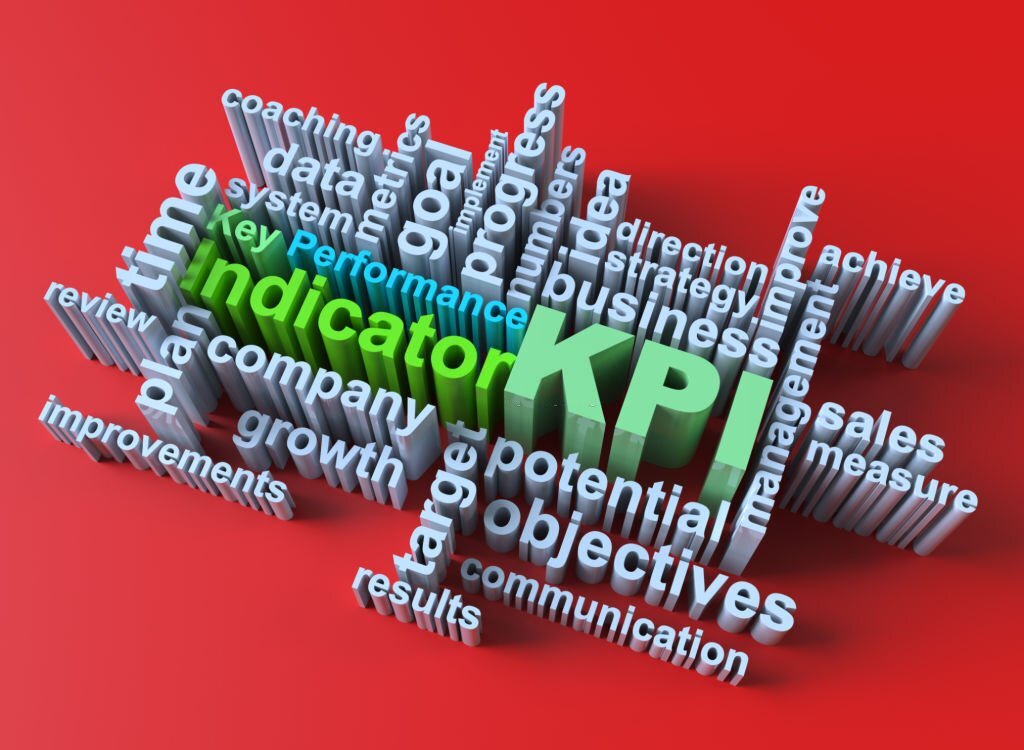Revenue strategy is the blueprint for the financial success of your business. In this blog post, you will learn why revenue strategy for small business is crucial for your long term success, and the 10 steps to create an effective revenue strategy to support your growth objectives.
What is revenue strategy?
Revenue strategy is the plan you create to optimize your revenue generation and make your business more profitable. It goes beyond just setting prices or attracting customers — it’s about aligning every aspect of your business towards maximizing revenue.
Why is revenue strategy for small business important?
Revenue strategy for small business is all about making informed decisions, understanding your market, and optimizing your efforts for maximum profitability.
Imagine you have a small online boutique selling handmade jewelry. Without a revenue strategy, you might randomly price your products, struggle to effectively reach your target audience, or overlook opportunities to increase customer lifetime value. This random approach can lead to missed revenue potential and stagnation.
However, with a well-defined revenue strategy, you can identify your ideal customers, craft compelling pricing strategies, and leverage marketing tactics to attract and retain your ideal customers.
By aligning your operations, marketing, and sales efforts, you will create a cohesive revenue-generating machine that propels your business forward.

Why revenue strategy and marketing are the key to profitable growth
Together, revenue strategy and marketing form a powerful duo that can unlock growth opportunities for your business. Let’s explore why integrating revenue strategy for small business with effective marketing practices is essential for your profitability.
Amplifying customer reach and awareness
Marketing acts as the loudspeaker for your business, spreading the word about your products or services to a wider audience.
By implementing targeted marketing campaigns, you can increase brand visibility, attract new customers, and expand your market reach.
A well-crafted revenue strategy for small business ensures that your marketing efforts are aligned with your overall revenue objectives, allowing you to maximize the impact of your marketing initiatives.

Nurturing customer relationships
Revenue strategy and marketing go hand in hand when it comes to building and nurturing customer relationships. Marketing plays a vital role in engaging with your audience, creating meaningful connections, and fostering loyalty.
By leveraging various marketing channels, such as social media, email marketing, or content marketing, you can consistently engage with your customers, understand their needs, and deliver personalized experiences.
This not only enhances customer satisfaction but also increases customer retention and lifetime value, driving revenue growth in the long run.

Optimizing revenue streams
With a robust revenue strategy, you can identify and optimize revenue streams within your business.
Marketing plays a pivotal role in this process by providing valuable insights into customer behavior, market trends, and competitive landscapes. By leveraging this information, you can make data-driven decisions about pricing strategies, product offerings, and distribution channels.
This integration of revenue strategy and marketing ensures that your business is poised to capture new revenue opportunities and adapt to changing market dynamics.
Enhancing competitive advantage
In today’s competitive business landscape, you can achieve a significant advantage with a well-defined revenue strategy and effective marketing practices.
By aligning your revenue strategy with marketing efforts, you can differentiate your brand from competitors, position yourself as a trusted authority, and create a unique value proposition.
This differentiation helps you attract customers who are willing to pay a premium for your products or services, thereby increasing your profitability.
Continuously evolving and innovating
Both revenue strategy and marketing require constant evaluation, adaptation, and innovation.
By monitoring key performance indicators (KPIs), analyzing market trends, and gathering customer feedback, you can identify areas for improvement and implement necessary changes.
This agility allows you to stay ahead of the competition, seize emerging opportunities, and continually optimize your revenue generation efforts.
Revenue strategy and marketing are inseparable when it comes to driving profitable growth for your small business. By integrating these two disciplines, you can:
- Amplify customer reach
- Nurture relationships
- Optimize revenue streams
- Enhance competitive advantage
- Continuously evolve to meet the changing needs of your market

10-step revenue strategy for small business
If you are serious about driving sustainable growth, it is essential that you learn to write a revenue strategy to optimize revenue generation.
By following the following 10 steps, you can develop a comprehensive revenue strategy for small business that is tailored specifically to your needs and goals.
1. Define your revenue goals
Start by clearly defining your revenue goals. Determine the specific financial targets you want to achieve, such as revenue growth percentages or sales volume.
These goals will serve as the foundation for your revenue strategy and guide your decision-making process.
2. Assess your current revenue streams
Evaluate your existing revenue streams and analyze their performance.
Identify which streams are the most profitable and which may require improvement, for example:
- Customer demand
- Profit margins
- Scalability
This assessment will help you identify areas of opportunity and focus your efforts on maximizing revenue potential.
3. Identify new revenue opportunities
Explore potential new revenue streams or opportunities that align with your business and target market:
- Expand your product or service offerings
- Enter new markets or customer segments
- Introduce innovative pricing models
Conduct market research, analyze industry trends, and consider customer needs and preferences to identify viable revenue opportunities.
4. Analyze your target market
Gain a deep understanding of your target market by analyzing customer demographics, behaviors, and preferences. Identify their pain points and unmet needs that your business can address.
This analysis will help you tailor your revenue strategies to effectively reach and engage your target audience.
See also: Maximize Your Sales Potential: Build an Ideal Client Profile Like a Pro
5. Develop pricing strategies
Determine pricing strategies that align with your revenue goals and market positioning.
Consider factors such as:
- Perceived value
- Customer willingness to pay
- Competitor pricing
- Production costs
Experiment with different pricing models, such as tiered pricing, value-based pricing, or subscription models, to find the optimal pricing strategy for your products or services.

6. Create marketing and sales plans
Craft a comprehensive marketing and sales plan to attract and convert customers, and align your marketing and sales efforts with your revenue goals to maximize their impact.
Define your marketing channels, messaging, and promotional activities to effectively reach your target audience.
Develop customer acquisition and retention strategies, including lead generation tactics, conversion optimization, and customer relationship management.
7. Implement effective customer relationship management
Focus on building strong customer relationships to drive repeat business and increase customer lifetime value.
To enhance customer satisfaction, these are some of the actions you can take:
- Track customer interactions with customer relationship management (CRM) systems
- Personalize communication
- Identify upselling or cross-selling opportunities
- Leverage customer feedback to improve your offerings

8. Set key performance indicators (KPIs) and metrics
Establish key performance indicators (KPIs) and metrics to track the success of your revenue strategy. These can include:
- Revenue growth rate
- Customer acquisition cost
- Customer lifetime value
- Conversion rates
- Average transaction value
Regularly monitor and analyze these metrics to measure your progress, identify areas for improvement, and make data-driven decisions.
9. Allocate resources and budget
Ensure that your resource allocation aligns with your revenue goals and prioritize investments that will have the greatest impact on revenue generation.
Determine the resources and budget required to execute your revenue strategy effectively. Allocate and keep track of funds for marketing campaigns, technology tools, personnel, and other necessary expenses.

10. Monitor, evaluate and adapt
Continuously monitor the performance of your revenue strategy, analyze market trends, and gather customer feedback. Regularly evaluate the effectiveness of your revenue-generating activities and identify areas for adaptation and improvement.
Stay agile and responsive to market changes, adjusting your revenue strategy as needed to ensure long-term success.
By following these steps and customizing them to your business’s unique requirements, you can develop a comprehensive revenue strategy for small business that drives profitable growth.
Remember, a revenue strategy is not a static document but a dynamic roadmap that evolves with your business and the ever-changing market landscape.
Template: Revenue strategy for small business
Developing a revenue strategy for small business is crucial for optimizing your revenue generation and driving sustainable growth.
The revenue strategy template is a framework for you to outline your strategy, with a specific focus on the marketing aspects of revenue generation.
I. Executive summary
Provide a concise overview of your revenue strategy, highlighting key objectives and outcomes.
You should summarize the main components of your strategy including:
- Target revenue goals
- Target market segments
- Key marketing initiatives
II. Business overview
Describe your business and its products or services.
Provide an overview of your target market, competitive landscape, and unique selling proposition. Highlight key strengths and competitive advantages that will contribute to your revenue generation efforts.
III. Revenue goals
Clearly define your revenue goals, both short-term and long-term.
Specify the financial targets you aim to achieve, such as revenue growth percentages or sales volume. Make sure your goals are SMART: specific, measurable, attainable, relevant, and time-bound.
IV. Market analysis
Conduct a thorough analysis of your target market:
- Describe your target customer demographics, behaviors, and preferences
- Identify customer pain points and unmet needs that your business can address
- Analyze market trends, competition, and potential opportunities for revenue growth

V. Pricing strategy
Outline your pricing strategy and how it aligns with your revenue goals. Consider factors such as production costs, competitor pricing, perceived value, and customer willingness to pay.
Define your pricing models, discounts, and any promotional offers that will help drive revenue.
VI. Marketing plan
Detail your marketing plan, which should include the following:
i. Target audience
Clearly define your target audience and create customer personas to guide your marketing efforts.
ii. Marketing channels
Identify the marketing channels you will utilize to reach your target audience effectively. This may include digital channels (e.g., website, social media, email marketing) and offline channels (e.g., print media, events, direct mail).
iii. Messaging and positioning
Develop compelling messaging that resonates with your target audience, highlighting your unique value proposition and addressing their pain points. Define your brand positioning and key differentiators.
iv. Lead generation
Describe your lead generation strategies and tactics, such as content marketing, search engine optimization (SEO), paid advertising, or referral programs. Outline how you will attract and capture potential customers’ attention and contact information.
v. Lead nurturing and conversion
Explain how you will nurture leads through the sales funnel and convert them into paying customers. Describe your lead nurturing tactics, such as personalized email campaigns, targeted offers, or educational content.

vi. Customer retention and upselling
Outline your strategies for retaining existing customers and maximizing their lifetime value. This may include loyalty programs, personalized recommendations, or exclusive offers for repeat customers.
VII. Budget and resource allocation
Ensure that your resource allocation aligns with your revenue goals and prioritize investments that will have the greatest impact on revenue generation.
Allocate funds for marketing campaigns, technology tools, personnel, and other necessary expenses. Determine the resources and budget required to execute your revenue strategy effectively.
VIII. Key performance indicators (KPIs) and metrics
Identify the key performance indicators (KPIs) and metrics you will use to track the success of your revenue strategy.
These may include:
- Revenue growth rate
- Customer acquisition cost
- Customer lifetime value
- Conversion rates
- Average transaction value
- Customer satisfaction metrics
Establish measurable targets for each KPI to track and evaluate your progress effectively.
IX. Monitoring and evaluation
Describe how you will monitor and evaluate the performance of your revenue strategy.
Specify the tools and processes you will use to gather data, analyze results, and make data-driven decisions.
Outline the frequency of monitoring and evaluation activities to ensure the strategy remains on track and effective.
X. Adaptation and continuous improvement
Acknowledge the dynamic nature of your revenue strategy and emphasize the importance of adaptation and continuous improvement.
Describe how you will stay agile and responsive to market changes, customer feedback, and emerging trends.
Emphasize the need for regular strategy reviews and adjustments to ensure long-term success.
By utilizing this template of revenue strategy for small business and customizing it to your business’s unique characteristics, you can develop a comprehensive revenue strategy that focuses on effective marketing to drive revenue growth.
Regularly review and update your revenue strategy as your business evolves and market dynamics change to maintain its effectiveness.
Implementation of revenue strategy for small business
Now that we understand your long term profitability relies heavily on your revenue strategy and marketing, let’s go through different aspects of revenue strategy for small business that you can implement to optimize your revenue generation, and set your business on a path to sustainable growth.
Identifying and segmenting target customers
To maximize revenue, it is crucial to understand your target customers and tailor your offerings to their specific needs.
By conducting market research, analyzing demographics, and identifying customer pain points, you can create customer personas and segment your audience effectively. This allows you to develop targeted marketing messages and tailor your products or services to meet their unique requirements.

Developing a value proposition that resonates
A strong value proposition helps create an emotional connection with your target audience and drives them to choose your business over others.
Clearly communicate the unique benefits and value your business provides to customers. Highlight what sets you apart from competitors and why customers should choose your offerings.
Pricing strategy and packaging
Pricing is a critical element of revenue strategy. Conduct market research to understand pricing expectations, analyze your costs, and determine a pricing strategy that maximizes both profitability and customer appeal.
Additionally, consider packaging your products or services in a way that encourages upselling or cross-selling opportunities, allowing customers to easily upgrade or purchase complementary offerings.
Enhancing customer experience and satisfaction
By delighting your customers, you increase the likelihood of repeat purchases, positive reviews, and valuable word-of-mouth referrals.
Customer satisfaction is directly linked to revenue growth. Focus on delivering exceptional customer experiences by providing excellent customer service, streamlining your purchasing process, and promptly addressing customer concerns.
Leveraging cross-selling and upselling opportunities
By offering additional value and convenience, you can increase the average transaction value and customer lifetime value.
Maximize your revenue potential by capitalizing on cross-selling and upselling opportunities. Identify related products or services that complement your customers’ initial purchases and promote them during the buying process.

Effective lead generation and conversion
Develop a robust lead generation strategy to attract potential customers and convert them into paying customers.
Utilize various marketing channels, such as social media, content marketing, and search engine optimization, to generate high-quality leads.
Implement effective lead nurturing tactics, such as personalized email campaigns or targeted offers, to guide leads through the sales funnel and convert them into paying customers.
Building strategic partnerships and collaborations
Forming strategic partnerships and collaborations can significantly expand your reach and revenue potential.
Identify businesses or individuals with complementary offerings and explore opportunities for mutually beneficial partnerships. This can include joint marketing campaigns, co-branded products, or cross-promotions.
Birchbox, a subscription-based beauty and grooming company, teamed up with Rent the Runway, an online fashion rental service, formed a partnership where Birchbox subscribers received exclusive offers and discounts on Rent the Runway rentals, and Rent the Runway customers received Birchbox beauty samples.
This collaboration allowed both companies to tap into each other’s customer base and enhance the overall value proposition for their respective customers.

Implementing effective marketing campaigns
Develop and execute targeted marketing campaigns to raise awareness, attract new customers, and drive conversions.
Utilize a mix of online and offline marketing channels:
- Social media advertising
- Content marketing
- Email marketing
- Events
- Influencer partnerships
Tailor your campaigns to resonate with your target audience and align them with your revenue objectives.
Leveraging technology for revenue optimization
Embrace technology tools and platforms that can streamline and optimize your revenue generation efforts.
Implement customer relationship management (CRM) systems to track and manage customer interactions, automate processes, and gain valuable insights into customer behavior.
Utilize analytics tools to measure the effectiveness of your marketing campaigns, identify opportunities for improvement, and make data-driven decisions.
Monitoring and analyzing key performance indicators (KPIs)
Identify and track key performance indicators (KPIs) that align with your revenue goals. This can include metrics such as:
- Customer acquisition cost
- Customer lifetime value
- Conversion rates
- Average transaction value
Regularly analyze these KPIs to measure the success of your revenue strategies, identify areas for improvement, and make informed decisions to optimize your revenue generation.
Continual evaluation and adaptation
Lastly, revenue strategies should be flexible and adaptable.
Continuously evaluate the performance of your strategies, monitor market trends, and gather customer feedback. Be willing to make adjustments and adapt your revenue strategies to meet changing market dynamics.
By staying agile and responsive, you can ensure your revenue strategies remain effective and aligned with your business goals.
By implementing these proven revenue strategies, tailored to the needs of small businesses, you can optimize your revenue generation and drive profitable growth.
Key takeaways
An effective revenue strategy is the backbone of sustainable growth.
Now that you have finished reading this comprehensive guide to revenue strategy, it’s time to put your newfound knowledge to use and create your own revenue strategy to optimize revenue generation.
I’ll be very sad if you have spend time reading this 3,000-word blog post about revenue strategy for small business but don’t take any further action to unlock your potential for profitable growth.
I tell you what – write your revenue strategy for small business using the 10 steps outlined in this guide, share it with me, and I’ll give you constructive feedback within 48 hours. Sounds good?
When you are done with your revenue strategy, send it to: bettina@bettinalee.com.
Just do it!

